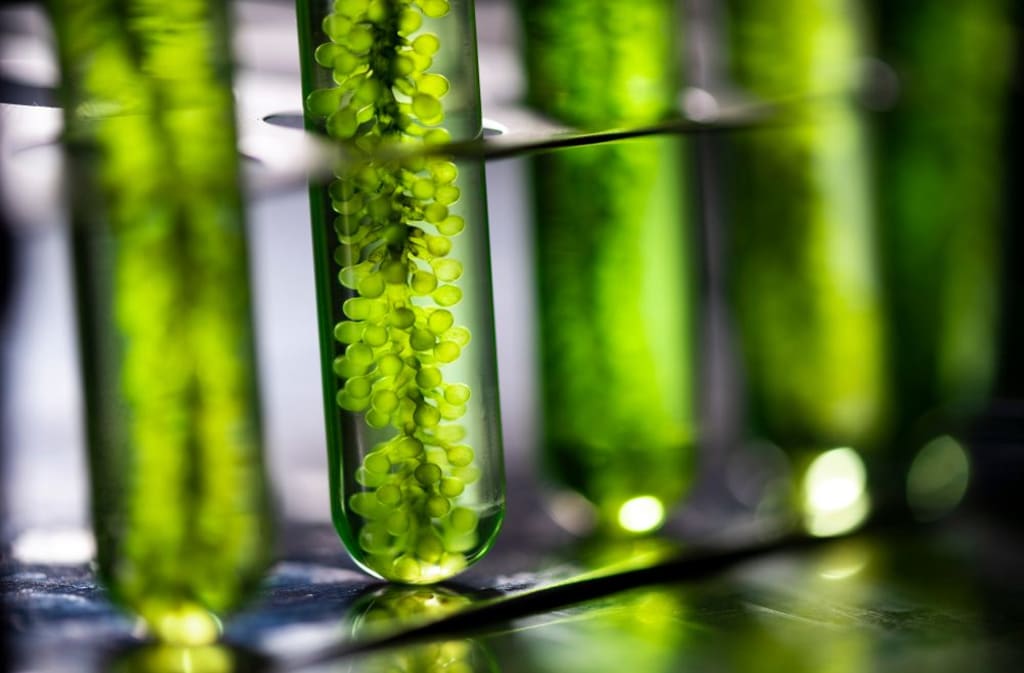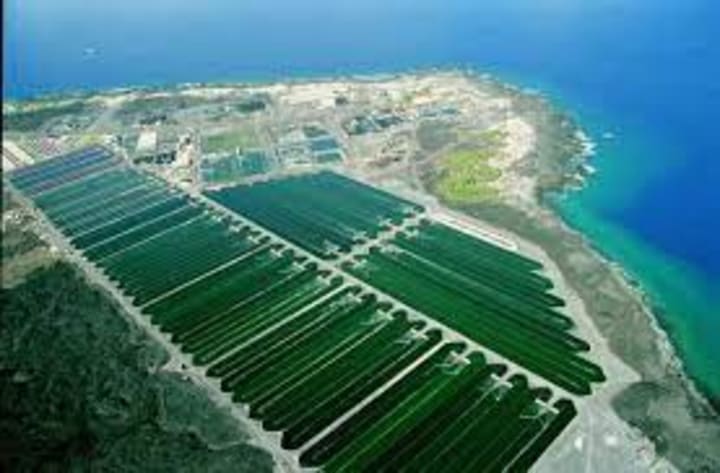
Cultivating marine algae on land-based farms could meet future nutritional demands from society and enhance environmental sustainability, according to a new study published in Oceanography last week (Oct .05).
The proposed development may exceed the 56 percent increase in food production needed to feed the 10 billion humans projected to be on the planet by 2050.
Protein-rich microalgae could be the answer to food insecurity :
Researchers from Cornell University, U.S., show that nutrient-rich, protein-rich microalgae (single-celled) could be the answer to reaching future global protein demands. These would be grown in aquaculture systems that are seawater fed and located on land.
"We have an opportunity to grow food that is highly nutritious, fast-growing, and we can do it in environments where we're not competing for other uses," Charles Green, professor emeritus of earth and atmospheric sciences and the paper's lead author, explained at the university's press release.
"And because we're growing it in relatively enclosed and controlled facilities, we don't have the same kind of environmental impacts," Green added.
Today’s food production is not sustainable or sufficient :

The research claims that climate change, a shortage of arable land, a lack of fresh water, and environmental degradation will all limit the amount of food that can be cultivated in the future decades.
"We just can't meet our goals with the way we currently produce food and our dependence on terrestrial agriculture," Greene stated.
With wild fish stocks already heavily exploited and with constraints on marine finfish, shellfish, and seaweed aquaculture in the coastal ocean.
Algae farms meet global food demands where overwhelmed fish stocks do not :
Greene and colleagues propose growing algae in onshore aquaculture facilities to solve this problem.
The new study created GIS-based models created by a former Cornell graduate student, Celina Scott-Buechler, that use terrain, yearly sunlight, and other environmental and logistical parameters to forecast yields.
The model's findings indicate that desert settings and the coasts of the Global South make for the ideal places for onshore algae growing operations.
"Algae can actually become the breadbasket for the Global South," Greene said. "In that narrow strip of land, we can produce more than all the protein that the world will need."
Their paper claims that food production from marine algae-based aquaculture has the potential to contribute more than the total global protein demand projected for 2050. In other words, their solution would exceed ranges from 263.8 metric tons per year (Mt/yr) to 286.5 Mt/yr.
The algae also provide a boost of nutrients currently lacking in vegetarian diets
The researchers also noted that in addition to algae containing high levels of proteins, they also possessed nutrients absent in vegetarian diets. These included omega-3 fatty acids frequently found in fish and seafood, as well as critical amino acids and minerals found in meat.
And that's not all.
Marine algae-based farms are 'carbon-eating' and have the potential to be carbon negative
Algae can be generated in a way that uses nutrients more effectively than agriculture does, growing ten times quicker than conventional crops. For instance, roughly half of the nitrogen and phosphorus fertilizer added by farmers to grow terrestrial crops washes off fields and contaminates waterways. On the other hand, excess nutrients can be caught and used again when algae are produced in enclosed facilities.
Likewise, aquaculture ponds require the addition of carbon dioxide (CO2) to produce algae. Algae has been tested as an additive to cement and building materials, which helps absorb carbon and keep it out of the atmosphere.
"If we use algae in these long-lived structural materials, then we have the potential to be carbon negative and part of the solution to climate change," Greene clarified.
Sourcing CO2, amongst others, is a current challenge for the proposed farms
Nevertheless, one issue is that it is currently expensive and inefficient to source CO2.
Indeed, algae farming appears to offer a practical solution to many food-related and environmental problems- at least on paper. How successful could it really be since it relies on people incorporating algae into their meals and other activities?
Later this year, a follow-up article that highlights and expands on these issues will be published.
Abstract:
By mid-century, society will need to significantly intensify the output of its food production system while simultaneously reducing that system’s detrimental impacts on climate, land use, freshwater resources, and biodiversity. This will require finding alternatives to carbon emissions-intensive agriculture, which provides the backbone of today’s global food production system. Here, we explore the hypothesis that marine algae-based aquaculture can help close the projected gap in society’s future nutritional demands while simultaneously improving environmental sustainability. Food production from marine algae-based aquaculture has the potential to contribute more than the total global protein demand projected for 2050, which ranges from 263.8 Mt/yr to 286.5 Mt/yr. It also offers important nutritional and environmental sustainability advantages relative to terrestrial agriculture. Marine algae can provide a better source of high-quality nutritional protein, essential amino acids, and other micronutrients relative to terrestrial plants. In addition, because marine algae do not require soil, irrigation, and the open application of fertilizer, their cultivation does not need to compete with agriculture for arable land and freshwater nor does it lead to fertilizer runoff and downstream eutrophication. Furthermore, by reducing agriculture’s demand for arable land and freshwater, marine algae-based aquaculture can reduce the pressure for deforestation, potentially leading to globally significant reductions in carbon emissions and biodiversity loss.






Comments (1)
Great update. thanks